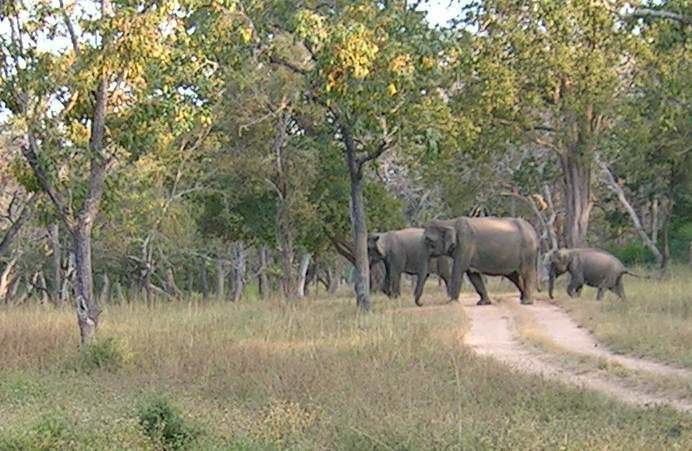 | ||
The South Deccan Plateau dry deciduous forests is a dry broadleaf forest ecoregion of southern India. The eco-region lies in the southern Deccan Plateau, within the Western Ghats' rain shadow. It receives 900 to 1,500 mm (35 to 59 in) of rain annually, much less than the North Western Ghats moist deciduous forests and South Western Ghats moist deciduous forests that lie to the west. The ecoregion covers the southern portion of Karnataka's Malenadu region, extending south into the Kongu Nadu region of eastern Tamil Nadu.
Contents
The South Deccan Plateau dry deciduous forests receive most of their rainfall with the June–September southwest monsoon, and are characterized by tall trees that drop their leaves during the dry winter and spring months. Much of the forest has been degraded through over-use, and thorn forests and shrub thickets are common. To the north and east, the dry deciduous forests transition to the Deccan thorn scrub forests.
Flora
These forests have three stories, with an upper canopy at 15–25 m (49–82 ft), an understory at 10–15 m (33–49 ft), and undergrowth at 3–5 m (9.8–16.4 ft). Trees are draped in lianas in denser, mature forests. The vegetation is characterized by Acacia catechu, Albizia amara, Anogeissus latifolia, Boswellia serrata, Cassia fistula, Chloroxylon swietenia, Dalbergia latifolia, Diospyros montana, Hardwickia binata, Pterocarpus marsupium, Shorea talura, Sterospermum personatum, Terminalia belirica, Terminalia paniculata, and Terminalia tomentosa. Sal found here is used for railway sleepers and house construction while teak, a durable timber is used for ship building and furniture. Sandalwood (Santalum album) is used for perfume and semal for toys.
Fauna
The ecoregion is home to 75 mammal species. Threatened species include the Indian elephant (Elephas maximus), wild dog (Cuon alpinus), sloth bear (Melursus ursinus), chousingha (Tetracerus quadricornis), gaur (Bos gaurus), and grizzled giant squirrel (Ratufa macruora). Salim Ali's fruit bat (Latidens salimalii) is critically endangered, and is near-endemic. 260 species of birds live in the eco-region, and two, the rufous babbler (Turdoides subrufus) and yellow-throated bulbul (Pycnonotus xantholaemus) are near-endemic. The threatened great Indian bustard (Ardeotis nigriceps) and lesser florican (Eupodotis indica) inhabit the eco-region.
